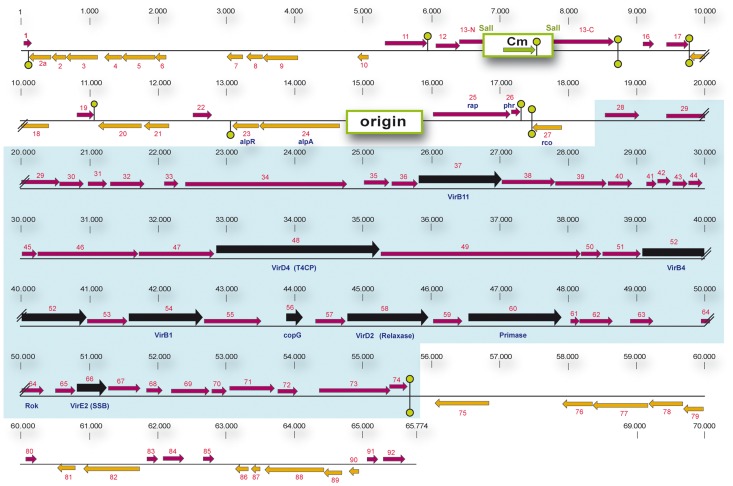Figure 2. Genetic map of pLS20cat.
(Putative) genes are numbered. Gene 1 corresponds to the homologue of gene 1 of the related Bacillus pumilus NRS576 plasmid p576 [37]. The positions and the lengths of the (putative) genes are indicated by arrows. Rightward and leftward oriented genes are indicated in purple and orange, respectively. Putative Rho-independent transcriptional terminators are indicated with green hairpin structures. The origin of replication region and the gene conferring resistance to chloramphenicol are labeled with green rectangles. The DNA region containing the chloramphenicol gene was cloned into the unique SalI site located in pLS20 gene 13 [24]. The sequences flanking the Cm resistance cassette coding for the N- and C-terminal regions of gene 13 are labeled 13-N and 13-C, respectively. The putative conjugation operon encompassing genes 28 to 74, is highlighted by a blue background. Genes showing significant homology with genes reported to be involved in conjugation in other systems are shown in black. Recently, the complete pLS20cat sequence has been deposited by Itaya,M., et al. (Mitsuhiro Itaya Keio University, Japan) in public database under accession numbers NC_015148.1 and AB615352.1. pLS20cat gene 25, according to our nomenclature, corresponds to gene 001 of the deposited sequence. Due to differences in annotation we prefer to maintain our nomenclature.

